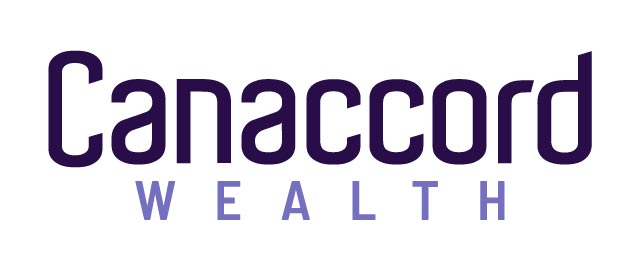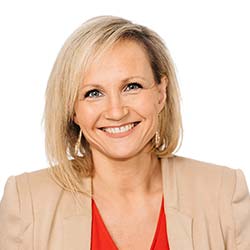This month:
All the signs suggest the coming months will be a time of both opportunity and risk. This may be disconcerting and particularly so for those without an advisor on hand. Yet, as our experts emphasise, there is little to be gained by fear.
Expert investment views:
Investors are urged not to stay on the side lines simply because of uncertainty in the markets
The experts ponder how best to take advantage of market corrections to invest more
Global interest rate trends are put under the microscope, along with their likely effect on markets
Ongoing corporate profitability is weighed against the risk of inflationary trends persisting
Featuring this month’s experts:




1. Uncertainty in the markets shouldn’t deter investors
In conversations with clients, I find the same question crops up nearly every time: when will we see a large fall in markets? It’s usually asked by those patiently waiting in cash, because they are certain that markets will collapse the moment they invest.
There are valid concerns behind the inaction. Investors are bombarded by information about the ongoing uncertainty prompted by the pandemic (both at macroeconomic and company levels), inflation spikes and central bankers’ responses, and whether expensive equity valuations (particularly in the US) really are too high.
It is also difficult to assuage these fears completely given we’re hard wired to respond, even if the primeval reactions of fight or flight aren’t appropriate. It means ignoring the refrain that time in the market beats timing the market, despite history telling us the worst investment days are very closely followed by the best.
It is also worth noting that most investors are waiting for bigger sell-offs of over 20%. These dips of 20% should happen 38% of the time. Those odds aren’t as good, particularly if you recognise you might have invested, booked the profit before the dip and received dividends
If you’re waiting, how much of a dip are you looking for? And, even if you wait, will you recognise the ‘bottom’?
Meanwhile, markets increase about 80% of the time, albeit not in a straight line. If you plan to wait for a 5% dip, the odds are quite good – there’s a 74% probability this will occuri. However, a quarter of the time (26%), it won’t. Was it worth the wait and forgoing some yield?
It is also worth noting that most investors are waiting for bigger sell-offs of over 20%. These dips of 20% should happen 38% of the time. Those odds aren’t as good, particularly if you recognise you might have invested, booked the profit before the dip and received dividends. Meanwhile, although many may be able to articulate how much portfolios fell by in recent market falls, I believe relatively few could articulate what that actually meant for their investment goals. I have clients who have been waiting for a sell-off since 2015. The opportunity cost is eye watering. Even if we ignore the low inflation environment we have lived in, what is the inflationary cost? Most importantly, what is the cost to these clients’ goals?
So, if you are tempted to remain in cash, or drip feed capital in over time, consider the cost. Investing in markets is prone to risk, but there are ways in which your investment journey can be made smoother (and that isn’t remaining in cash).

Rebecca Cretney
Investment Counsellor, Nedbank Private Wealth
2. Current market volatility – what’s going on?
Market volatility returned with a vengeance in the last few weeks after being almost forgotten. What have we got to fear from the turmoil?
The worries range from Chinese regulatory intervention, a global slowdown, a potential US default and higher taxes to central banks hiking rates prematurely. Slower growth is the biggest risk. Looking at the global Purchasing Managers Indices (PMIs), we can allay these concerns, since the majority of them are in expansion territory and, although some are falling, they are still showing strong growth. Given the massive supply chain issues that are prevailing, this is a vote of confidence from businesses.
Bond yields haven’t finished rising and this should support cyclical value sectors (energy, financials) as in Q1, but ultimately technology and other growth sectors will return as growth abates, so a balance is advisable
Besides, the economic slowdown which was flagged by economic surprise indices slumping and bond yields dropping, is now in the process of reverting, with yields pointing to recovery and surprise indices rebounding. This can be corroborated from the consumer’s standpoint: sitting on tons of extra savings, with many returning to employment against a backdrop of interest rates way below inflation, it’s only rising prices that are capping the massive consumer spending boom. So, inflation is acting as a consumption tax and shouldn’t bother central banks too much. Added to that, why would the Fed raise rates in a supply crisis? How would that improve matters? Even the more trigger-happy MPC (Monetary Policy Committee) should think twice about adding to people’s energy woes by raising mortgage rates.
The question now is not whether we should take advantage of this correction to invest more, but rather which investments to go for. Bond yields haven’t finished rising and this should support cyclical value sectors (energy, financials) as in Q1, but ultimately technology and other growth sectors will return as growth abates, so a balance is advisable.

Michel Perera
Chief Investment Officer at Canaccord Genuity Wealth Management

Top Tip

Lee Goggin
Co-Founder
3. Things are about to get tighter. And choppier too?
Central bankers cannot continue their spending splurge forever. Investors are watching carefully to see how they manage the transition back to more conventional monetary policy.
The Norwegian central bank was the first among the G10 economies to fire the starting gun on tightening last month, raising rates from zero to 0.25%.
The US Federal Reserve, which has been buying between $40 million and $80 million a month since the middle of last year, has said that if the current trend in COVID-19 remains on track, fund purchases will gradually taper through the year, and could cease in the middle of next year.
As policy tightens we’re likely to see further shifts in sentiment as investors adjust. With near-zero rates and the wave of liquidity having acted as a support to asset prices, the gradual return to normal will likely see markets become choppier
The Bank of England Monetary Policy Committee has voted to keep current policies in place but edged closer to the possibility of an interest rate rise, perhaps in early 2022 but possibly sooner.
The pace and scale of rate rises – which increases the cost of raising money for development for companies and can erode the value of bonds issued at lower rates – is also a critical matter for investors.
Markets were volatile in the days ahead of the BoE and Fed meetings in September but seemed at ease with the tone of the announcements. However, as policy tightens we’re likely to see further shifts in sentiment as investors adjust. With near-zero rates and the wave of liquidity having acted as a support to asset prices, the gradual return to normal will likely see markets become choppier. Though the outlook remains positive, don’t be surprised by short-term falls and recoveries in the coming months as investors adjust to the changing circumstances. This could be a time of opportunity and risk.

James Beck
Head of Investments at James Hambro & Partners
4. How will markets fair if inflation persists?
Despite rising inflationary pressures, many asset markets have had a healthy period in 2021, although there has been a great deal of bifurcation amongst various markets, regions and sectors. In simple terms, it has been those assets that are perceived as inflation beneficiaries, as well as in equity markets those companies that fare well when interest rates rise that have performed best, with energy and banks towards the top of the leader board.
Notably, most companies have so far been easily able to pass on the rising costs of inputs and wages to end consumers, leading to the widest profit margins recorded in history
Notably, most companies have so far been easily able to pass on the rising costs of inputs and wages to end consumers, leading to the widest profit margins recorded in history. This has been a real boon for investors in companies’ shares, but the question must be “what next”? Will we see a continuation of this trend, or will elevated input costs and unmistakably rising wages erode the profits of companies who might eventually be unable to encourage consumers to pay more for their products?
For now, at least, this question remains unanswered, and does make us more sceptical than most about just how well equity markets can fare if inflationary trends persist for longer than most expect.

Thomas Becket
Chief Investment Officer at Punter Southall Wealth
Important information
The investment strategy and financial planning explanations of this piece are for informational purposes only, may represent only one view, and are not intended in any way as financial or investment advice. Any comment on specific securities should not be interpreted as investment research or advice, solicitation or recommendations to buy or sell a particular security.
We always advise consultation with a professional before making any investment and financial planning decisions.
Always remember that investing involves risk and the value of investments may fall as well as rise. Past performance should not be seen as a guarantee of future returns.


